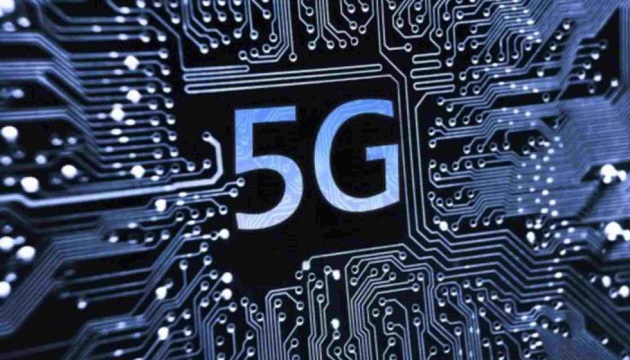5G is the next-generation of mobile networks beyond the LTE/4G mobile networks of today. Although 5G is currently only in the planning stages, 5G will represent a quantum leap beyond 4G networks in terms of speed, efficiency, and total capacity. Do we really need 5G? After all, the current 4G networks work just fine for phone calls and streaming video to your phone or tablet when Wi-Fi isn’t available.
However, as Figure 1 shows, faster speeds and more bandwidth are required for all the new wireless technology that is on the way, and a connected, seamless society. For example, 5G will be necessary for additional automation in cars and later on for driverless cars to successfully communicate with infrastructure and the Cloud, where the car can get traffic information, accident warnings, and reliable Over-The-Air (OTA) firmware updates. According to Cisco, “Global Internet traffic in 2020 will be equivalent to 95 times the volume of the entire global Internet in 2005. Globally, Internet traffic will reach 21GB per capita by 2020, up from 7GB per capita in 2015. Every second, nearly a million minutes of video content will cross the network by 2020.” And by 2020, video traffic will be 82 percent of all consumer traffic.

Fifth generation wireless is supposed to be 10 times faster than 4G at 5Gbps, provide the needed to bandwidth for a rapidly growing number of connected devices, and be so pervasive that devices will remain connected as they transfer from point to point. With all of this traffic, 5G is meant to enable critical traffic sent to and from connected platforms such as automated functions in cars, infrastructure, and all the other things that will make up our “smart cities.” By 2020, the details of 5G may be worked out, but judging by the 4G roll-out, it will take at least ten years before the infrastructure to support 5G is fully implemented. However, 5G may be available in certain cities or areas within cities in the early 2020s.
The International Telecommunications Union (ITU), the United Nations agency that sets rules for radio spectrum usage and telecommunications interoperability, is working on standards to be released in 2020. Among the expectations for 5G are peak download speeds of up to 10Gbps and latency of about 1ms (promised values are more probable on networks with very low loading). The theoretical download speed of 4G is 1Gbps with about 50ms latency. In the real world, the ITU says that 100mbps download speeds and 50mbps upload speeds are more realistic for most users. The ITU also wants networks to be able to deliver a minimum level of service to one million connected devices per square kilometer (2.59 million per square mile). This requirement is intended to accommodate the explosion of IoT devices.
It seems reasonable to have a worldwide standard for 5G, but other standards, like USB, organically spread across the globe. USB started out with the support of Microsoft and Intel, so it stands to reason that they had a couple of technology juggernauts behind it. The Internet of Things (IoT) and self-driving cars are two growing applications that are not yet in full bloom, however, many can see that both are within reach. Standards have always seemed to evolve from collaborations between companies, via open source model, or from known standards bodies like the IEEE. The UN is guiding 5G in general by releasing a worldwide set of requirements for a whole series of standards related to 5G, called the IMT-2020. The standardization process began back in 2012, with plans for 5G technology development, a vision, framework, and naming of the IMT-2020. The spectrum at 6GHz and below has been reviewed and the technical view to using spectrum greater than 6GHz, as well. The immediate future has various trials underway with sharing of studies for the efficacy of various methods to reach 5G. In 2018 and forward, there will be consensus-building, more sharing of technical findings, with final work towards a worldwide standard that lays out the spectrum and radio interface specifications for 5G.
You can understand why the UN is involved. Had the UN been involved when automobiles were first invented and proliferating, perhaps every car in the world would have the steering wheel on the same side. And all electrical plugs might look exactly alike. However, because 5G is so enormously complicated, it is taking quite some time just to develop general technical guidelines that will be presented as the IMT-2020. The whole effort is supported worldwide by several companies and industries that are forming work groups and supporting organizations. 5G is not just a technical standard; there are many spectrum regulations, legal issues, and jurisdictions to navigate worldwide.
Companies are not waiting for ITU to release complete standards, however. Even though the picture is not yet complete, several are leading the charge by starting trials on 5G. For example, Verizon and Sprint have already held trials of 5G, and Intel and Qualcomm have released 5G modem chips to support those efforts. Verizon has plans for additional 5G trials in fixed wireless, and we may see some replacement of fiber optics using such technology before a 5G specification is set forth. The 5G standard will not be able to specify every detail, and it’s important for companies to be involved early on and often, since de facto standards may emerge from companies that work the issues first and lay the groundwork for others.
Verizon says that it will begin delivering 5G service to select users in 11 US cities in 2017. At the recent Mobile World Congress and partner programs, more than 2,300 companies participated. Verizon, Netflix, Twitter, Baidu, China Mobile, Ericsson, Intel, Qualcomm, Huawei, National Instruments, and others exhibited their efforts towards 5G networks. Mobile World Congress Americas was held in San Francisco over September 12-14, 2017, and highlighted “innovation in areas such as 5G and next-generation networks, the Internet of Things (IoT), and the intersection of mobile with entertainment, content, and media.”
(Article courtesy: Mouser Electronics)








